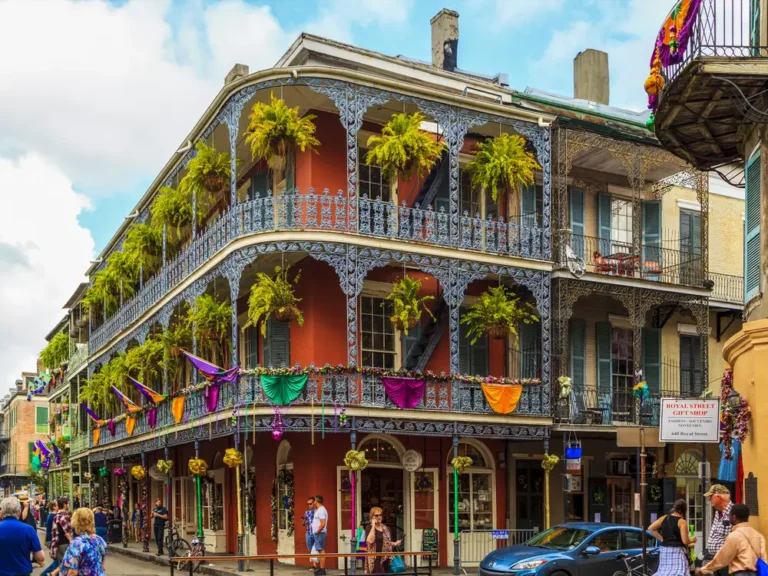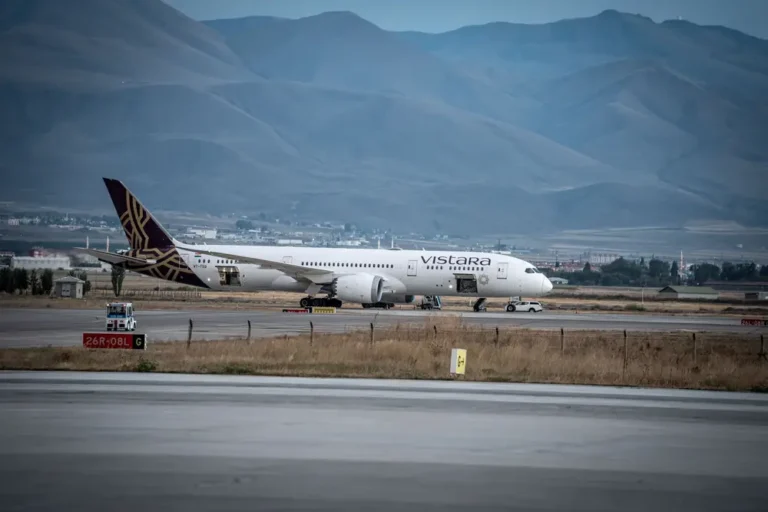See the new suite-style seats Air India is launching in the US as it fixes its notoriously awkward business class

The closet in the center section of the plane offers ample storage space.
Founded by the Tata Group in 1932, Air India was once the gold standard for air travel — so much so that Singapore Airlines modeled its business after it.
But the once prestigious airline faced widespread criticism after it was nationalized in 1953. Customers complained about unkept planes and an awkward business class.
The airline, desperate for a turnaround, was reacquired by the Tata Group in October 2021, and new management quickly invested billions in overhauling its fleet.
Air India welcomed its first new plane, an Airbus A350-900, in January. One of the most exciting upgrades in the new plane is its suite-style business class, which B-17 toured at the Farnborough Airshow in July.
The A350 was initially launched on shorter flights to familiarize crews, but the new and improved premium option will begin flying to the US in November.
Air India hopes to shake up the market and better compete with fan favorites like Qatar Airways and Emirates — and it has finally created something its highest-paying customers can look forward to.
Air India displayed the new A350 at the Farnborough Airshow in July.

Air India has adopted the gold “Vista” as part of its branding.
Air India first unveiled its A350 at the Wings Airshow in Hyderabad in January before bringing it to Farnborough. The airline unveiled new routes for its A350 at the airshow, starting with flights from Delhi to New York’s John F. Kennedy International Airport on November 1.
Flights to Newark Liberty International Airport in New Jersey start on January 2. The routes, which last about 15 hours and span about 7,300 miles, are currently served by the airline’s legacy Boeing 777.
CEO Campbell Wildon told reporters at the airshow that the airline aims to build an “aviation hub” in India. He said the hub’s geographically central location, like Qatar’s in Doha and Emirates’ in Dubai, could offer more efficient connections covering most corners of the globe.
The star of the show is business class.

Air India’s new business class includes 28 pod-like suites.
The cabins were designed by Russian carrier Aeroflot, not Air India.
Air India acquired the planes after war-related sanctions kept them from Russia and the airline opted to keep Aeroflot’s cabin design — but add its own branding and style.
The new suite-style cabin is leagues above Air India’s legacy product.

Air India’s Beoing 777 legacy business class has no doors or direct aisle access.
Air India’s legacy business class is awkward. Its 2 × 3 × 2 layout means some passengers will still be stuck in a middle seat despite investing in a “premium offering.”
Plus, window and middle-seat passengers can’t freely access the cabin when the aisle is in bed mode. Air India addressed all of this and more with its A350’s 1 × 2 × 1 configuration.
The sliding doors offer maximum privacy.

The middle section seats are separated by a retractable divider.
Sliding doors have become the norm in business class as deep-pocketed travelers demand more luxury at the front of the plane. Air India hopped on this bandwagon with its new cocooned suites.
British Airways, Turkish Airlines, and Korean Air also have unveiled similar privacy-focused cabins.
There is no shortage of storage space.

The open closet on Air India’s A350 business class has ample storage.
The new suite features a closet, a cubby, and tabletop storage space. The closets can fit full-sized coats, suits, or dresses.
This is a nice change from Air India’s legacy planes, which only provide a few small storage nooks.
Taller travelers can fit in the lie-flat beds.

A lie-flat bed on board an Air India A350.
Each seat has a roomy footwell and adjusts into a lie-flat bed that stretches 6 feet 7 inches long — meaning most travelers can comfortably fit.
The old business class bed was not completely flat. It had a slight slope, which made it less comfortable.
The seatback screen is a big improvement.

The seatback screen came with a touchscreen remote.
Air India’s old business class screen is dim and far from the seat, but luckily, it comes with a button-operated remote.
The new A350, by comparison, has a high-definition 21-inch flatscreen television. Customers get noise-canceling headphones, a touchscreen remote, and access to plenty of entertainment options, from Hollywood and Bollywood to music and games.
The linens and tableware are impressive.

The purple two-piece item in the top right photo is the creative “vista”-shaped cheese platter.
It’s easy to see the improvements in Air India’s soft product. Things like linens and food can make or break a business-class experience — and Air India’s is particularly elegant.
The A350 featured a cheese platter resembling Air India’s “Vista” logo, a two-in-one pillow and mattress cover, and new china designed with the airline’s iconic Maharaja mascot.
The items featured purples and golds — likely a nod to Air India’s merger with Vistara.
Passengers will get Tumi sleepwear.

Passengers get Tumi sleepwear and an amenity kit.
The Tumi pajamas and slippers have been available on Air India’s long-haul flights as part of its soft product enhancements, so its no surprise they will also provided on its A350 planes.
Amenity kits stocked with an eyemask and dental kit complement the sleepwear.
There’s a mini-bar.

The mini-bar was not stocked during the media tour.
Business class passengers can access a mini-bar stocked with snacks and alcohol, such as Johnnie Walker Black Label and Grey Goose.
Air India’s mini-bar is a toned-down version of the more extravagant bars installed on rivals Qatar and Emirates’ Airbus A380 double-decker planes.
The new suite otherwise comes with the regular business class basics.

Air India’s new business class seat has ample power ports.
Air India’s A350 has more power ports than its legacy predecessor and its adjustable tray table can be stored out of the way of the bed.
B-17 found the power outlets on the legacy business class to be broken during a January flight.
The A350 hosts one of several cabin configurations available on Air India.

Air India technically has sliding doors in business class because it flies ex-Delta 777s equipped with the feature.
Beyond its new A350s, Air India has adopted other strategies for upgrading its fleet.
Air India is spending millions refurbishing its legacy Boeing 787 and Boeing 777 aircraft. B-17 found earlier this year that the old business and economy seats sometimes broken or patched with duct tape.
In the meantime, the carrier has also acquired planes from carriers including Delta Air Lines and Etihad Airways, which feature those airlines’ nicer cabins.






